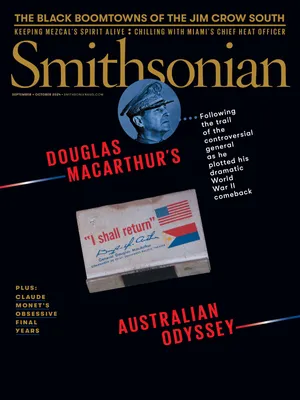The Stratocaster Became Rock Music’s Most Iconic Guitar 70 Years Ago
The plucky design behind the legendary instrument that forever changed the look of rock ‘n’ roll
:focal(1050x750:1051x751)/https://tf-cmsv2-smithsonianmag-media.s3.amazonaws.com/filer_public/f3/ae/f3ae38b9-7de5-4c0f-970f-6de81de42795/untitled-1.jpg)
The man who invented history’s most iconic electric guitar couldn’t play, or even tune it. But when Clarence Leonidas “Leo” Fender’s eponymous company released the Fender Stratocaster 70 years ago, it forever changed popular music.
Fender, born in 1909, began tinkering with radios as a teenager. After college, he built sound systems for a local dance hall in California and started his own company, Fender Radio Service. He also began working with musicians to amplify acoustic guitars, just as electrified sound was becoming the fashion at concerts. Primitive solid-body electric guitars had been around since the 1930s, but Fender envisioned a mass-produced, affordable model that would be easier to hold, tune and play. In 1950, Fender released his first guitar, the Esquire, and the following year rolled out his famous design for the Telecaster.
But it was the next design, released in 1954, that would establish Fender as one of the biggest names in guitars. He began designing the Stratocaster, a model that would improve on the Telecaster both electronically and aesthetically, adding a third pickup—the gizmo that turns string vibrations into electrical impulses that can be amplified. This addition allowed players to generate a wider and richer sound palette (think Jimi Hendrix’s incendiary performance of the national anthem at Woodstock). Fender also designed a contoured body that was more balanced and comfortable to play—and looked like something from the future. The Stratocaster “was really well designed, in some ways a decade ahead of its time,” says Andy Leach, a senior director at the Rock & Roll Hall of Fame. “It had a lot of design features that became industry standard. And it basically has not changed in 70 years, which shows what a genius Leo Fender was.”
The Stratocaster also had timing on its side. It came out amid two other transformative innovations: television and rock ’n’ roll. Sales picked up once Buddy Holly showcased a Strat on the “Ed Sullivan Show” in 1957. For the American and English kids who came of age in the ’60s—Hendrix, Eric Clapton, David Gilmour, the electrified Bob Dylan at the Newport Folk Festival—the guitar’s look was as groundbreaking as its sound. “Cool” depends more on appearance than on wiring, and the Strat’s double-cut profile (producing two “wings” at the top) and sensuous body lines were mind-blowing. It looked, one early ’60s British pop musician recalled, like “the equivalent of a bullet-finned ’59 Cadillac.”
Today, the Fender Strat continues to define the look and sound of rock ’n’ roll. If you’re a guitarist, you either own one or you desperately want one. For everyone else, whenever you’re shredding an air guitar solo to “Free Bird” or “Layla,” you’re shredding a classic Strat.


